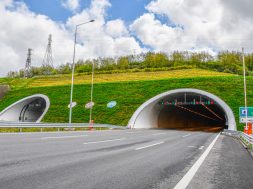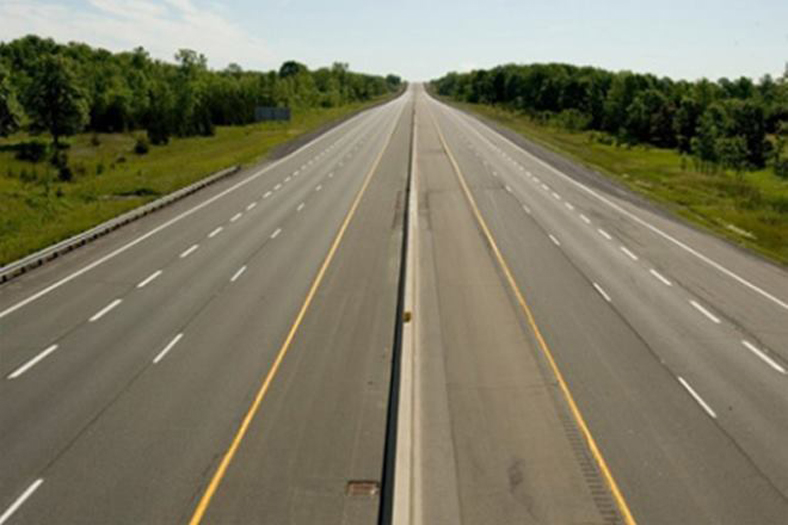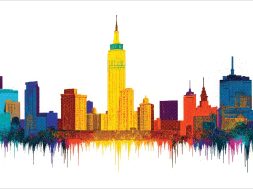How green buildings benefit owners and occupants?

Discussion on how green building benefit owners and occupants
As we know green buildings are widely adopted globally, with well-built growth expected in most countries and most predominantly in under developing ones. The movement benefits a range of businesses including building owners and occupants, property developers and managers, investors, and suppliers to the construction industry.
Green buildings are much less expensive to operate. For example, environmentally-improved building reduces the cost to both cool the building in summer and heat the building in winter, which can build up to impressive savings over time – sometimes bringing energy costs down to a meagre amount. Similarly, measures like automated thermostats and light sensors result in greater energy reductions, helping to cut costs for the building owners and occupants.
State and central government have started encouraging the usage of green building. This means that building owners can often collect tax credits and other incentives which reduce the spending needed to make their buildings green.
Less pollution suspended in the air is an important benefit to green building practices, such as the refusal to use paints with high concentrations of unpredictable organic compounds. Occupants have an easier time using buildings without having to breathe in such pollution. Additionally, it ensures that said individuals have reduced risks for a number of serious medical conditions extending to and beyond breathing problems leading to healthier life for occupants.
In green buildings naturally, the reduction of wasteful practices also reduces a building’s impact on an over-burdened earth. Given the rising importance of conservationism, trumpeting green building practices can see building owners’ reputations fly, leading to improved relationships with their stakeholders. Increasingly, many environmentally-conscious home buyers actively seek to rent or purchase green buildings.
As per Ar. S P Anchuri, Chief Consultant, Anchuri & Anchuri the green building benefits for the owners and occupants are mainly as follows;
• Effectiveness and cost-efficacy. While the upfront capital costs of green buildings are often higher, they have a quick return on investment due to reduced operating and maintenance costs and the cost-saving for existing buildings after a major retrofit can be as high as 45 per cent, through improvements to ventilation, lighting, electrical installations, lifts, escalators and more.
• Increased demand and property values. The key factors that determine property values are still location, size, condition and design. However, growing awareness and demand for greenness in building means that buyers and occupants are willing to pay more for green buildings in metro cities and even in towns of India.
• In case of occupants of public green buildings we achieve improved employee productivity. Worker absence can significantly impact productivity. Green design emphasises natural lighting and ventilation, which helps to safeguard employees’ health.
• Express shared accountability. As well as energy-efficiency, green building features include onsite generation of renewable, rainwater and grey water recycling, and ‘green envelopes’ like vegetated walls and roof gardens. Green envelopes can reduce localised air pollution by up to 20 per cent, reducing toxic air at street level and thus improving public health.
Sustainable living is an emerging concept among the new generation of home buyers in India. Home buyers of today are well travelled, environmentally conscious and desire to live in a project that is green. This is particularly true for home buyers staying in metro cities where green cover is minimal and they yearn to live in areas that are greener with low pollution levels.
Explaining how green buildings benefits owners and occupant Tushad Dubash, Director, Duville Estates says, “In such cases, large township projects are better equipped to incorporate green cover in their projects rather than a standalone building. Additional green cover within a city helps in reducing carbon footprint; water quality is protected, it reduces heat build-up, reduces soil erosion, Improves air quality, lowers air temperature, rainfall retention (rainwater harvesting) and helps natural resource conservation.”
He adds, “The initial cost of installing green home systems are marginally high but in the long run it turns out economical as the on-going maintenance charges like water and electrical charges are drastically reduced.”
For instance, Duville Estates’s project Riverdale Heights located at Kharadi, Pune is an IGBC Gold Pre-Certified Green project is situated within a serene green landscape along the MulaMutha River. It has ensured to keep as many of the green elements as possible and intertwined them into its design. It has incorporated design elements wherein so that part of its total power needs is taken care of by solar power.
Instead of green buildings, Amit Khanna, Founder & Design Principal, AKDA prefer to use the term sustainable buildings. He says from an owner’s perspective, a sustainable building provides three main benefits.
The first is the substantial reduction in energy consumption, since the biggest long term expense to an owner is the energy consumed by the building. Good building envelope design can reduce the amount of energy required to heat/cool the building, as well as reduce the need for artificial lighting during daytime. The second is the increased likelihood of being able to attract tenants based on a sustainable design. End-users, whether renters or buyers or simply visitors, have a growing appreciation for the value generated by sustainable buildings for the larger environment. The third benefit of green building is the various incentives offered by governmental and independent agencies for those who invest in sustainable buildings. These are offered in the form of tax deductions, lower energy tariffs, or the ability to source raw materials for items like solar panels at subsidised rates.
Occupants are also beneficiaries of sustainably designed buildings in a number of ways. The first benefit is the increased well-being of occupants of buildings designed with natural ventilation and natural materials, reducing ‘sick building syndrome’. Secondly, those who use sustainably designed buildings incur the benefits of naturally lit living and working environment.
As per Shabbir Kanchwala, Senior Vice President, K Raheja Corp with increased awareness amongst developers, builders, property owners, realtors and the public, there is a conscious preference made in favour of green buildings which consume less energy and water. Efficient use of energy resources and their conservation are essential for curbing wasteful consumption and sustainable development and to contribute to this, K Raheja Corp, uses innovative and ultra-modern technologies like Net Zero concept, HVAC amongst others. Preserving natural resources are the need of the hour and these technologies aim to do just that, by reducing wastage of water and conserving natural resources.
He sates, “On being a responsible developer, K. Raheja Corp has a green vision that their entire commercial, as well as residential projects pan India will be LEED & IGBC Green Certified.”
Apart from the advantages that green buildings bring to the environment, they are also beneficial to all in the long run, believes Ar. Sabeena Khanna, Studio KIA She says, “While the upfront capital costs of green buildings may seem higher, they have a quick return on investment due to reduced operating and maintenance costs. The key factors that determine property values may still be location, size, condition and design but there is a growing awareness and demand for sustainable design, meaning that buyers and tenants are willing to pay more for green technologies in buildings. Green design also emphasises on the use of natural lighting and ventilation, which in turn safeguards health.”
All it requires is a vision, strong will and determination to bring about a ‘sustainable system’, one that keeps going indefinitely into the future. “Greater the demand, lesser the costs and greener the environment….this should be the mantra to be practiced by all,” she adds.
Ar. Prem Nath, Prem Nath & Associates also believes that the initial investment for the green building is comparatively higher than the conventional building, however if compared with long term benefits, the said cost makes-it-up for the said investment; thus a green building, be it a residential tower or an office building or a school – it is surely beneficial to all, including its owner or occupant.
Agreeing upon Ar. Prem Nath views Keyur Barad, Founder & Ceo, Gecko Worldwide also says, “Even though constructing a green building is slightly expensive the reduced costs of maintaining these buildings make them much cheaper in the long term.”
Jaimin Desai, Head, Design & Sustainability, Mahindra Lifespace Developers Ltd believes green buildings are built in harmony with nature. They consume less water, optimise energy efficiency, conserve natural resources and generate less waste, while providing healthier living spaces for occupants (as compared to conventional buildings). A truly ‘green’ approach in this context seeks to ensure that the entire lifecycle of a building – from planning, site selection and design, to construction, occupancy and end-of-life phase – is sustainable. For residents, this translates into tangible benefits in the form of savings in water and electricity utilities, while intangible benefits include enhanced ventilation, adequate daylight, superior air quality and an overall sense of harmony and well-being.
“Humans are biophilic and perform best in good daylight and plenty of oxygen. Planning for maximum daylight, thermal comfort and fresh air requires orienting the building in accordance with the sun path,” says Rahul Kadri, Principal Architect, Kadri Consultants Pvt. Ltd.
As per Kadri to achieve this, all there institutional buildings follow simple rules which include: the longer side of a room to face the north with large windows, corridors on the south side, singly loaded corridors, block of the east and west and ventilator windows on the south side. These simple principles reduce the energy consumption by 50 per cent and enhance human performance by 10 per cent.
Green buildings are designed to make them environmental friendly, during the construction and even after the occupation of the building. The main objective of the green building is to reduce the overall impact of the building on human health and natural environment.
Rohan Agarwal, Managing Director, Geopreneur Group says, “Since green building use energy, water and other natural resources very efficiently, these buildings benefits the owner as well as the occupants. Since non-toxic materials are used for construction, these buildings help to protect the health of the occupants, and thus it improves the productivity of the employees. These building are designed for reduced energy consumption like less requirement of air conditioning and no requirement of lighting during the day time. Part requirement of lighting in achieved through solar lights. Green building consumes less water and it also protects and conserves water throughout its life-cycle. Rain water in harvested, sewage in treated and water in recycled for landscape and flushing purpose.”
Green buildings cause less damage to the environment during the construction phase; make optimum use of resources. Once constructed, they save on maintenance costs as also consume less electricity, given that the planning entails better light and ventilation as compared to normal buildings.
“To my mind, the biggest plus-point of green buildings is not just the advantages in form of maintenance cost savings, but also the impact these buildings have on public opinion – they increase awareness about the need to preserve ecology and be ‘in sync’ with nature while creating square feet of construction,” says Niranjan Hiranandani, CMD, Hiranandani Communities.
Cookie Consent
We use cookies to personalize your experience. By continuing to visit this website you agree to our Terms & Conditions, Privacy Policy and Cookie Policy.









